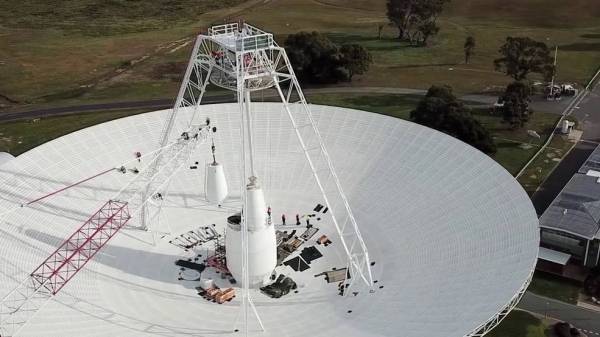You could practically hear the collective “PHEW!” as NASA announced that they had reestablished full two-way communications with Voyager 2 on Friday afternoon! Details are few at this point — hopefully we’ll get more information on how this was pulled off, since we suspect there was some interesting wizardry involved. If you haven’t been following along, here’s a quick recap of the situation.
As we previously reported, a wayward command that was sent to Voyager 2, currently almost 19 light-hours distant from Earth, reoriented the spacecraft by a mere two degrees. It doesn’t sound like much, but the very narrow beamwidth on Voyager‘s high-gain antenna and the vast distance put it out of touch with the Canberra Deep Space Network station, currently the only ground station with line-of-sight to the spacecraft. While this was certainly a problem, NASA controllers seemed to take it in stride thanks to a contingency program which would automatically force the spacecraft to realign itself to point at Earth using its Canopus star tracker. The only catch was, that system wasn’t set to engage until October.
With this latest development, it appears that mission controllers weren’t willing to wait that long. Instead, based on what was universally referred to in the non-tech media as a “heartbeat” from Voyager on August 1– it appears that what they were really talking about was the use of multiple antennas at the Canberra site to pick up a weak carrier signal from the probe — they decided to send an “interstellar shout” and attempt to reorient the antenna. The 70-m DSS-43 dish blasted out the message early in the morning of August 2, and 37 hours later, science and engineering data started streaming into the antenna again, indicating that Voyager 2 was pointing back at Earth and operating fine.
Hats off to everyone involved in making this fix and getting humanity’s most remote outpost back online. If you want to follow the heroics in nearly real-time, or just like watching what goes on at the intersection of Big Engineering and Big Science, make sure you check out the Canberra DSN Twitter feed.













